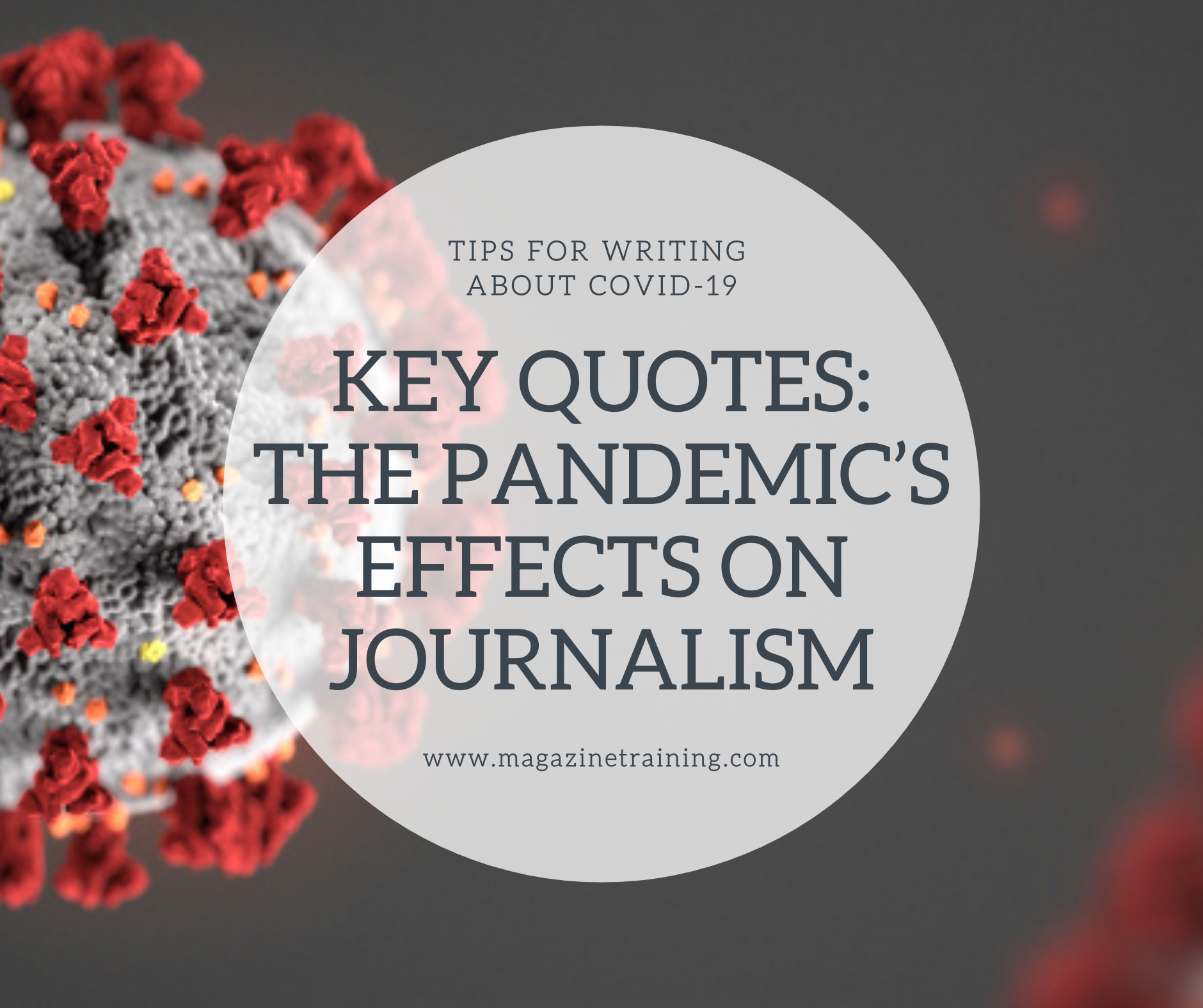
In early October, IJNet’s parent organization, the International Center for Journalists (ICFJ) and the Tow Center for Digital Journalism at Columbia University released the preliminary findings of their English-language survey aimed at understanding the pandemic’s effects on journalists and newsrooms. The survey received 1,406 responses from respondents in 125 countries.
Last week, ICFJ convened a virtual panel to discuss the results and their implications. The panel included Rappler CEO and executive editor Maria Ressa, New York University professor and media critic Jay Rosen, Columbia University professor and Tow Center director Emily Bell and ICFJ director of global research Dr. Julie Posetti.
Here are the key takeaways from their discussion:
Physical and mental health
According to the survey findings, 70% of respondents noted negative psychological and emotional impacts from covering the pandemic. The top five negative reactions affected at least one third of respondents and included increased anxiety, burnout/exhaustion, difficulty sleeping, sense of helplessness, and dark and negative thoughts.
- “We were very struck that the psychological and emotional impacts of dealing with the COVID-19 crisis was identified by a large majority of people who responded,” said Professor Emily Bell.
- “To underscore what we’ve identified as a mental health crisis within journalism, there’s been some other research with smaller samples,” said Dr. Posetti. “Also 82% of our respondents described at least one negative or psychological or emotional reaction to the pandemic.”
- Ressa recognized that mental health would be a challenge and offered group and individual counseling for Rappler staff after the onset of the pandemic.
Freedom of the press
According to the preliminary survey report, 20% of respondents experienced more harassment during the pandemic. Fourteen percent of respondents reported direct censorship of their reporting, and 14% experienced political pressure to produce positive coverage of government and elected officials.
- “There were a lot of instances identified that really underlined the way in which particularly states around the world have used COVID-19 as a cloak, if you like, to either extend their existing attempts to suppress critical independent journalism, or restrict it, or to introduce new impacts,” said Dr. Posetti.
Spread of disinformation
The most common sources of disinformation according to respondents were regular citizens (49%), political leaders and elected officials (46%) and attention-seeking trolls (43%). Eighty percent of respondents said they encounter disinformation at least once a week, with the majority coming from Facebook (66%), Twitter (27%) and WhatsApp (35%).
- Prof. Bell pointed out that when combining all government-related sources of disinformation, including political leaders, government agencies and government troll networks, then “the governmental role in spreading disinformation far outstrips everything else.”
- As the panelists discussed disinformation tactics, Rosen introduced the term, “flooding the zone,” as it’s known in the U.S., or “firehose of falsehood,” as it’s known in Russia. These terms describe a tactic used by disinformation actors on social media, during which the goal is to flood channels with theories and falsehoods, often conflicting information, for the purpose of creating controversy and distrust.
by Abby Geluso, International Journalists’ Network
Related posts
Category: Uncategorized
Malnutrition is a health crisis affecting millions around the world — and one becoming more urgent as the pandemic continues. Its impact is not just represented in […]
Magazine Training International’s mission is to encourage, strengthen, and provide training and resources to Christian magazine publishers as they seek to build the church and reach their societies for Christ.

